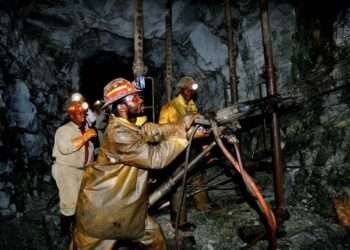Ghana’s crude oil production has experienced a consistent downward trend, averaging a decline of 9.2 percent over the last four years.
According to the 2023 Annual Report on the Management and Use of Petroleum Revenue by the Public Interest Accountability Committee (PIAC), the country’s oil output in 2023 was 48,247,036.61 barrels, marking a 6.78 percent decrease from the 51,756,481 barrels produced in 2022.
This marks the fourth consecutive year of declining production since Ghana reached its peak oil production in 2019 with 71,439,585 barrels. The decline began in 2020, when production fell to 66,926,806 barrels, a 6.32 percent drop.
The trend continued with a significant 17.75 percent reduction in 2021, producing 55,050,391 barrels, followed by a 5.98 percent decrease in 2022. The figures for 2023 indicate a further 6.78 percent decline, underscoring a persistent reduction in oil output.
Crude oil in Ghana is currently extracted from three main fields: Jubilee, TEN (Tweneboa, Enyenra, and Ntomme), and Sankofa Gye-Nyame (SGN). The Jubilee field, which began production in December 2010, remains the largest contributor, accounting for 63 percent of the total oil produced in 2023 with 30,444,217 barrels.
The SGN field, operational since May 2017, produced 11,086,541.61 barrels, contributing 23 percent to the total production. TEN, which came on stream in August 2016, produced 6,716,278 barrels, making up 14 percent of the annual output.
Emerita Professor Ardayfio-Schandorf, Chairperson of PIAC, attributed the ongoing decline to a lack of investment in discovering new oil fields and the natural ageing of existing fields, which has led to reduced production capacity. The absence of significant new investments poses a substantial challenge to sustaining and potentially increasing Ghana’s oil production in the future.
A Slight Increase In Natural Gas Production
In contrast to the declining crude oil production, Ghana saw a slight increase in natural gas production in 2023. The total raw gas production, encompassing both Associated Gas (AG) and Non-Associated Gas (NAG), reached 255,171.97 million standard cubic feet (MMSCF), compared to 253,555.05 MMSCF in 2022. This represents a 0.64 percent increase in gas output.
The SGN field, known for its higher gas concentration, led the gas production with 127,203.02 MMSCF of combined AG and NAG. The Jubilee field followed with 77,900.05 MMSCF, while TEN produced 50,068.90 MMSCF. This uptick in gas production is a positive sign amid the challenges facing the oil sector.
The implications of the continuous decline in crude oil production are multifaceted. Economically, reduced oil output can impact national revenue, which is heavily reliant on oil exports. This can, in turn, affect government spending on essential services and infrastructure projects. Additionally, the lack of new investments could signal a potential decline in future production capabilities, making it imperative for Ghana to explore alternative strategies to attract investment and enhance its oil and gas sector’s sustainability.
Efforts to reverse this trend might include incentivizing foreign and domestic investments, improving regulatory frameworks, and exploring advanced technologies for enhanced oil recovery from existing fields. Furthermore, diversifying the economy and strengthening other sectors can help mitigate the economic risks associated with the fluctuating oil industry.
While Ghana’s crude oil production faces significant challenges with a consistent decline over the past four years, there are avenues to address these issues. Strategic investments and policy adjustments could help stabilize and eventually boost production levels. Meanwhile, the slight increase in natural gas production provides hope and a potential area for further development in the country’s energy sector.
READ ALSO: Mahama’s 24-Hour Economy Policy: A Bold Vision for Ghana’s Future – Fifi Kwetey





















